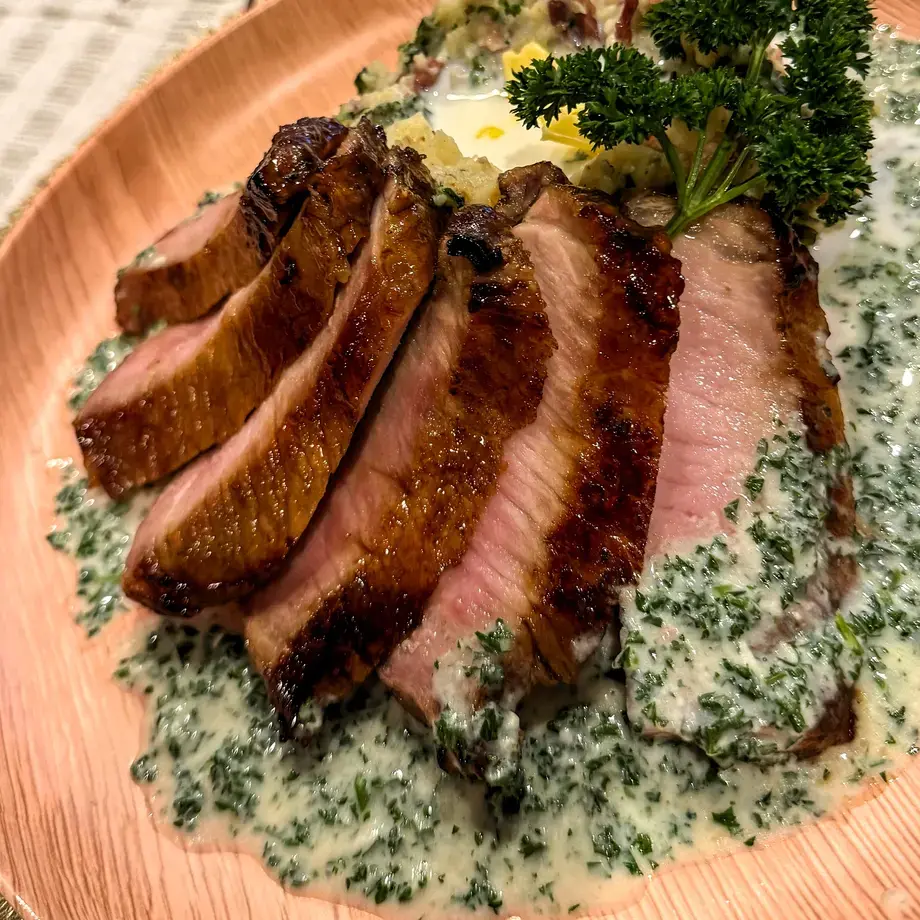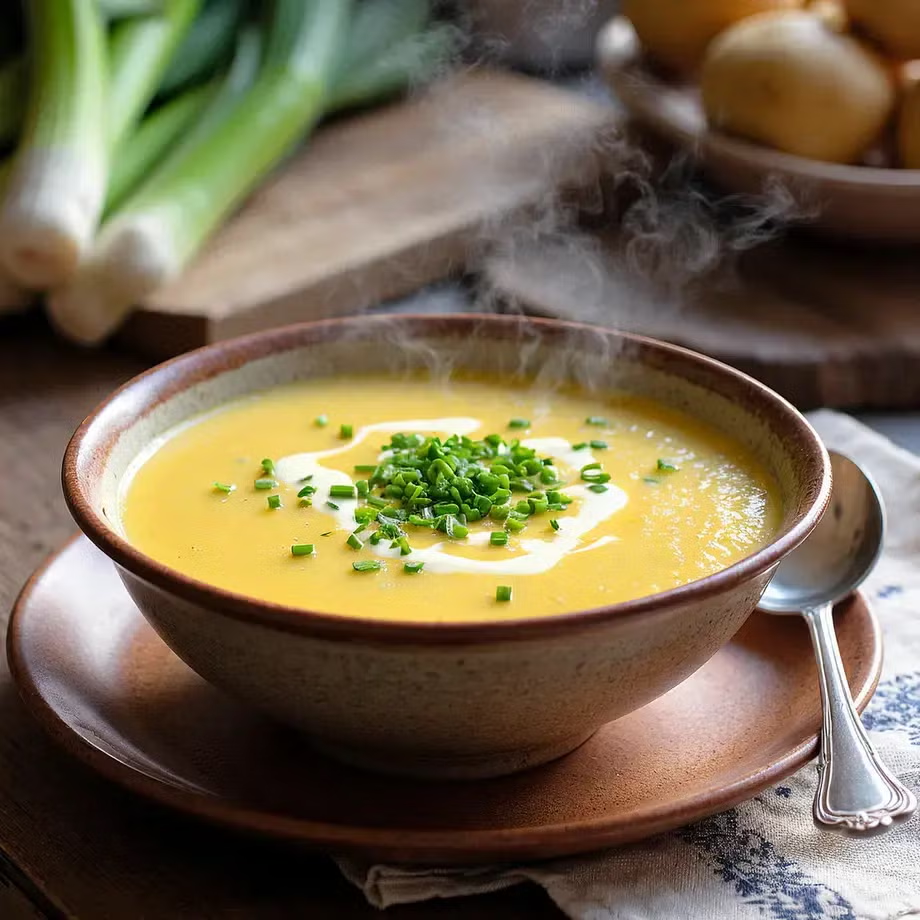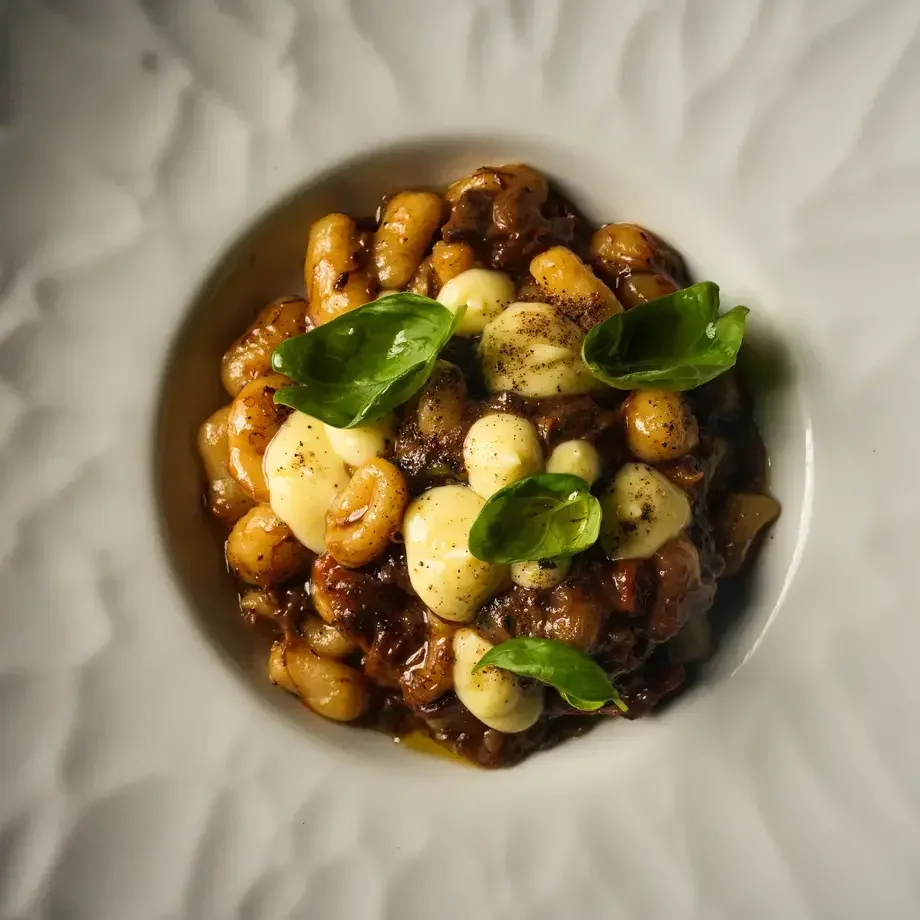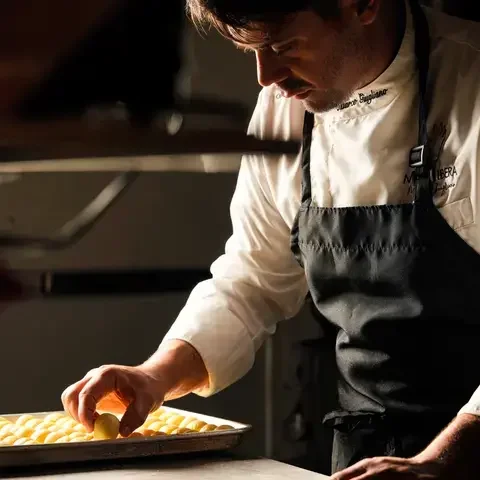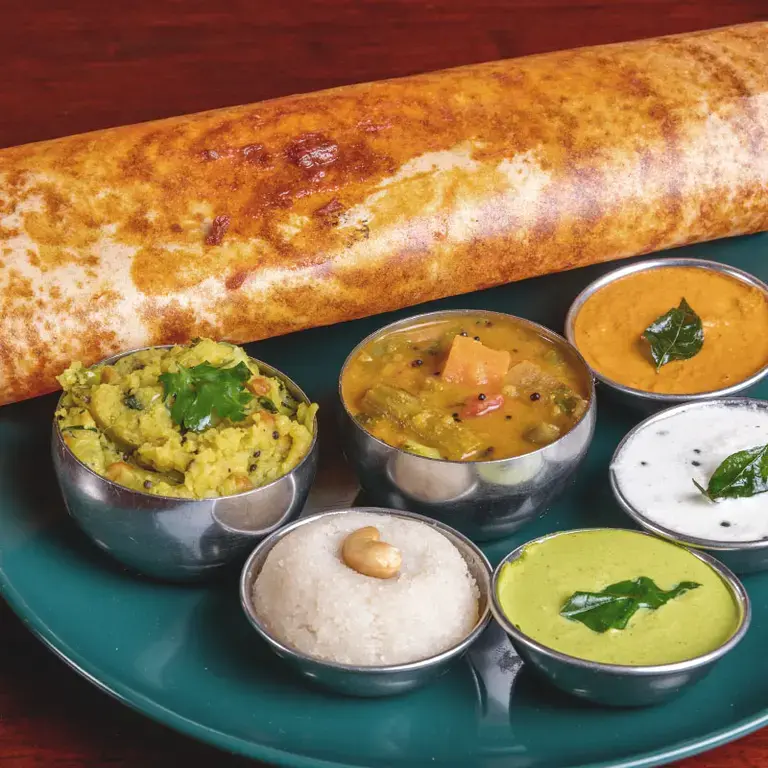
Photo by Deepal Tamang via Unsplash
Classic dosa recipe
Idli rice: ½ cup (100g), or parboiled rice
Regular rice: ½ cup (100g)
Urad dal: ¼ cup (50g)
Fenugreek seeds: ⅛ teaspoon or 2 pinches of methi seeds or methi dana
Thick poha (flattened rice): 2 tbsp
Water: 1.5 cups – for soaking both rice and lentils
Water: ¾ cup – for grinding, do add water as required
Sea salt crystals: ½ teaspoon, or non-iodised salt or Himalayan pink salt
Dosa is a typical dish of Indian cuisine, a delicious snack made from fermented rice and lentils. Find out how to prepare and how serve it.
Dosa is a classic of Indian cuisine – a delicious treat that will send your taste buds into overdrive. It's made from a simple mixture of fermented rice and lentils, but the flavours it brings to the table are simply irresistible. Dosa is commonly eaten for breakfast. It gives the ideal kickstart to your day as it has the right amount of carbs and protein, minus saturated fats and sugars. This crispy yet soft pancake-like dish can also be served as an appetiser, as a main course, and with a variety of condiments from chutneys to curries – there are plenty of options for creating the perfect dosa experience. For those who haven't tried dosa, there's no better time than now to explore this delicious dish.
Method
In a bowl, combine the idli rice or parboiled rice with the regular white rice.
To the same bowl, add the urad dal and fenugreek seeds.
Rinse the rice, lentils and fenugreek seeds and keep aside in a bowl.
Rinse the flattened rice and add it to the bowl containing the rinsed rice, lentils and fenugreek seeds.
Pour in 1.5 cups water. Mix. Cover with a lid and soak everything for 5 to 6 hours.
Drain all the soaked ingredients and add to a wet grinder jar.
Add ⅔ to ¾ cup water and grind to obtain a fine grainy consistency. You can grind everything at once or in two batches depending on the jar capacity.
Place the batter in a large bowl or pan.
Add ½ tsp rock salt. Mix well. Cover and allow to ferment for 8 to 9 hours or more. A proper fermentation will double or triple the volume of the batter, and you will see tiny air pockets in the batter with a light sour aroma.
Stir the batter before you begin to make dosa.
Heat a cast iron pan. Spread ¼ to ½ teaspoon of oil around the pan. Keep the heat on low to medium-low. If the pan base is very thick, keep the flame on medium.
Take a ladle full of batter. Pour the dosa batter in and spread it from the centre outward.
Cover it with a lid and cook the dosa on low to medium heat.
When the batter is well cooked and the bottom has become crisp and golden, sprinkle ¼ to ½ teaspoon oil on the edges and centre. Spread the oil on the dosa with a spoon.
Cook until the base is golden and crisp.
Fold and serve hot.
Tips & tricks
You can halve, double or triple this dosa recipe. If you are doubling or tripling the recipe, soak the urad dal and fenugreek seeds in a separate bowl. Grind the urad dal and fenugreek seeds separately. Grind rice separately. Then mix both batters in a large bowl or pan. Grind soaked rice in two to three batches.
This recipe can be made with only idli rice or white rice or with a combination of idli rice and white rice.
Take the temperature of where you live into account, as it plays an important role in fermentation.
Use non-iodised salt. Pink salt or sea salt can also be used.
Origin of dosa
Dosa originated in South India, but its exact geographical origin is unknown. According to historian P. Thankappan Nair, this dish originated in the town of Udupi in present-day Karnataka.
Is dosa healthy?
Dosa is an excellent source of healthy carbohydrates and contains no added sugars or saturated fats. A single dosa with no oil contains about 112 calories, of which 84% is carbohydrate and 16% protein. The fermentation process boosts the concentration of vitamin B and vitamin C.
Dosa is a treat for your taste buds and is light on your digestive system. In addition, being a wholesome meal, dosa keeps you full for longer. For an even healthier twist, you can use more dal and less rice when making the batter.
How to serve dosa
Dosa is served hot with accompaniments like chutney, sambar (thin, soup-like dal with vegetables), potato masala, and different Indian pickles. It’s traditional in Indian culture to eat dosa with your hands – Indians like to tear off small pieces and eat them with chutney. It can be stuffed with veggies and sauces for a quick meal. Dosa is typically served with a vegetarian side dish which varies according to regional and individual preferences.


